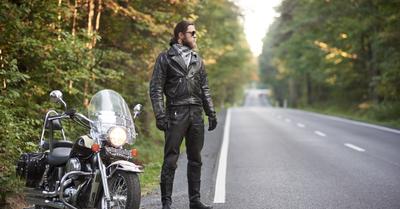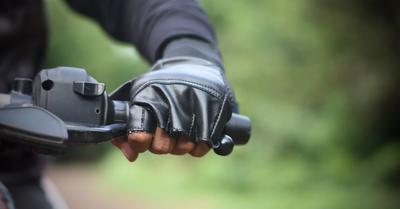Why are Motorcycle Helmets Needed?
In 2020, the NHTSA reported that over 5,579 people were killed in motorcycle accidents, and what is worse is that the numbers for 2021, although not released, don’t look any better. Of all the fatalities in 2020, about 37% of those who perished were not wearing helmets (about the same percentage did not have a valid motorcycle license). Studies have also shown that an operator or passenger who does not wear a helmet is 28 times more likely to die than when traveling in a passenger car.
What to Look for In Choosing a Motorcycle Helmet?
There are several things to consider when choosing the best helmet. Rather than scooping up the first helmet you find, try to take some time and educate yourself on the many choices available.
Style - What’s the Type of Helmet?
There are many variations in helmet styles that perform better than others in protecting riders of motorbikes.
Full-face
This helmet covers the entire head, neck, and chin area. It is one of the safest helmets to buy. (Most accident reports indicate that in an accident, the chin area takes injury in over 52% of the cases, so having protection on this area can be very important). The helmet has a shield to protect eyes from flying bugs, gravel, or other debris on the road surface. (You would be surprised how much gravel there is on a clean, paved road. Take it from me, you don’t want to know). This helmet is the safest style because it provides the best overall protection.
¾ Helmet
This type of helmet covers the head but not the face and tends to expose the chin area. While some models have shields, most don’t, so your face will be open to whatever smackdown you didn’t see coming. A ¾ is much easier to breathe in than a full-faced one, and no visor will ever fog up from breathing, so there are some advantages.
Half Helmet
This helmet looks a lot like the kind of helmet your grandfather wore in the war because it covers the top of the head and maybe the neck area but little else. It sits above the ears, exposing the entire face, cheeks, and ears. While this might be the lightest helmet to wear, it provides the least protection.
Modular
This helmet has a visor in front that flips up in the front and is usually attached to a full-faced or ¾ helmet. While the visor on hinges allows the operator to flip up the face shield and catch a breath of fresh air or talk to someone face to face, it can provide less protection. The visor may even detach, allowing the operator to wear it or not.
Off-Road
This unit is a helmet specifically designed for racing or motocross. It is not suited for street riding, although some Dual-Sport helmets have tried to capture the best of both worlds.
Price - What’s the Cost?
The cost of the motorcycle helmet can vary from less than $50 - over $1000. The average operator can expect to pay about $150 for good quality and durable helmet. Don’t be surprised if you are asked to pay more for a higher-rated helmet or even a full-faced one versus a half-helmet.
Helmets are made from two layers. The interior is made of foam or polystyrene and is designed to cushion the head. The exterior is a thin layer of Kevlar, hardened plastic, or fiberglass. Most expensive helmets are made of Kevlar since they provide the best protection.
Fit - How Does it Feel on the Head?
The fit is what matters in a helmet. If you wear a covering that is too large, the helmet can shift on impact, exposing vital areas. Accidents can slam the helmet into the skull with excessive force and cause multiple injuries. If a helmet is too small, some areas of the head, face, or chin are exposed to the pavement.
The best way to ensure a good fit for a helmet is to go to the dealer and spend some time trying on the displays. A helmet should fit comfortably but not move back and forth on the head once strapped. Assess the helmet's weight (remember you will wear it, sometimes for lengthy periods). A helmet should fit snugly but not so tightly that it creates pressure points on the forehead, scalp, or temples. Here are some questions to answer as you try on the helmets.
- Does it fit right? Not too large, not too small.
- Does it cushion my head adequately?
- Does it press against my scalp, neck, or ears?
- How heavy is it?
- How easy is the strap to work?
- Does the strap cut into my chin or under the jaw?
- What is the safety rating?
- How does it look in the mirror?
- How easy is it to remove?
Safety - Will it Protect?
Every motorcycle helmet must meet specific federal safety standards determined by the DOT (Department of Transportation). This agency has certain standards for testing all things on a helmet, like penetration, the field of vision, and impact durability. All DOT helmets have an approval sticker, so look for that label when considering a purchase.
If you want to be super careful, look for a Snell-certified helmet. The Snell Memorial Foundation is another agency dedicated to protecting riders and racers by promoting the safe usage of helmets; named for Pete Snell, a race car driver who died in the late 1950s from head injuries when his helmet failed. This non-profit group conducts a battery of tests that would satisfy your grandmother. A Snell-certified helmet uses some of the latest technology to measure the impact of helmets before, during, and after a crash. They run many more tests than the DOT and set very high standards. Rest assured, a Snell helmet is the safest helmet on the market. Snell-certified helmets should also have a corresponding sticker and barcode.
What About a Helmet for Passengers or Riders?
Many motorcycle enthusiasts forget to consider purchasing a helmet for riders who might be climbing onto the bike with them. The options for a second helmet are to purchase one or you can make your present helmet (assuming it is in good shape still) a passenger helmet. The only downside to this approach is that riders don’t always have the same size as you, so be aware that a helmet that fits you might not fit your passenger. Never use an ill-fitting helmet.














